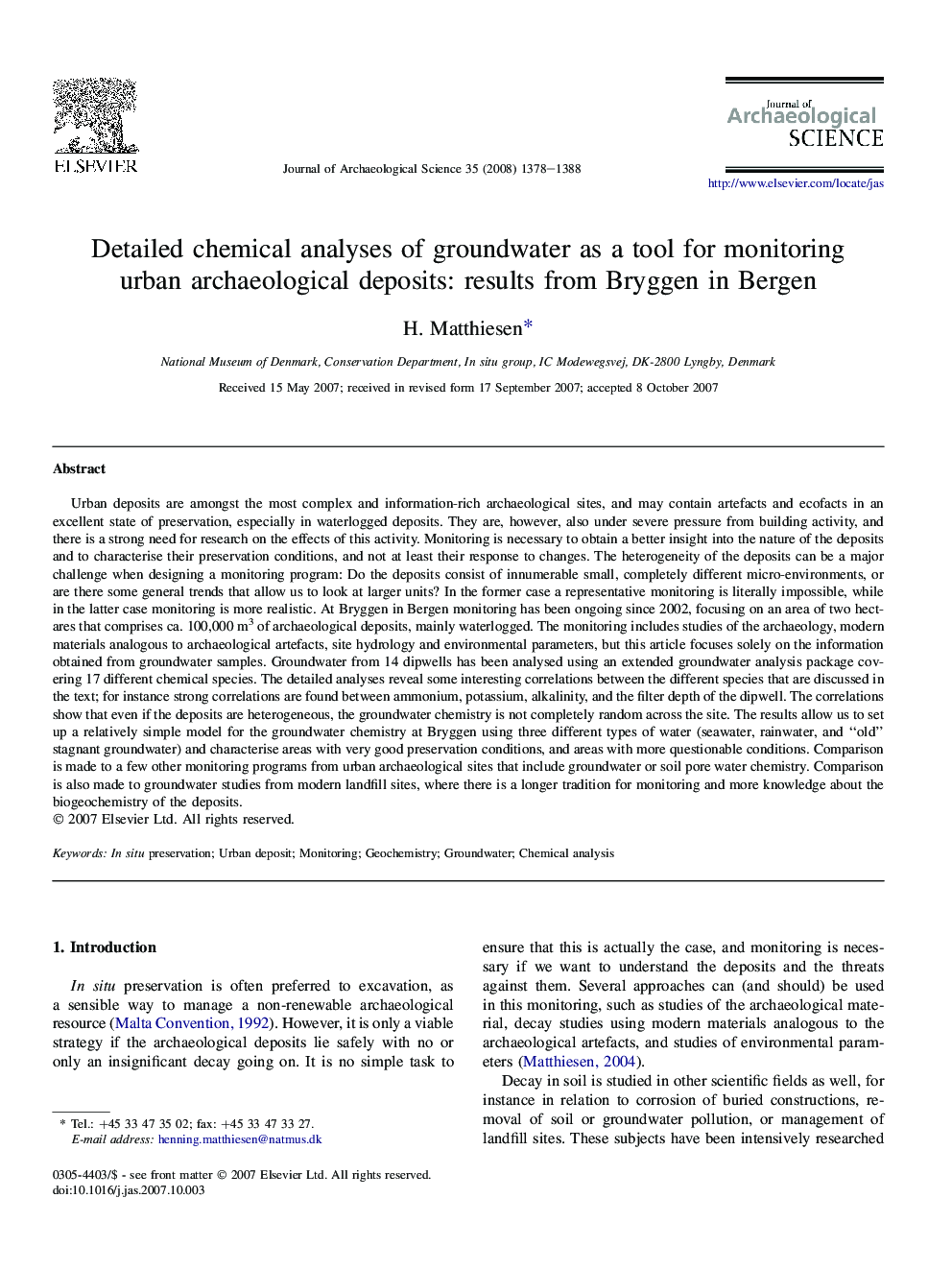| کد مقاله | کد نشریه | سال انتشار | مقاله انگلیسی | نسخه تمام متن |
|---|---|---|---|---|
| 1037364 | 943923 | 2008 | 11 صفحه PDF | دانلود رایگان |

Urban deposits are amongst the most complex and information-rich archaeological sites, and may contain artefacts and ecofacts in an excellent state of preservation, especially in waterlogged deposits. They are, however, also under severe pressure from building activity, and there is a strong need for research on the effects of this activity. Monitoring is necessary to obtain a better insight into the nature of the deposits and to characterise their preservation conditions, and not at least their response to changes. The heterogeneity of the deposits can be a major challenge when designing a monitoring program: Do the deposits consist of innumerable small, completely different micro-environments, or are there some general trends that allow us to look at larger units? In the former case a representative monitoring is literally impossible, while in the latter case monitoring is more realistic. At Bryggen in Bergen monitoring has been ongoing since 2002, focusing on an area of two hectares that comprises ca. 100,000 m3 of archaeological deposits, mainly waterlogged. The monitoring includes studies of the archaeology, modern materials analogous to archaeological artefacts, site hydrology and environmental parameters, but this article focuses solely on the information obtained from groundwater samples. Groundwater from 14 dipwells has been analysed using an extended groundwater analysis package covering 17 different chemical species. The detailed analyses reveal some interesting correlations between the different species that are discussed in the text; for instance strong correlations are found between ammonium, potassium, alkalinity, and the filter depth of the dipwell. The correlations show that even if the deposits are heterogeneous, the groundwater chemistry is not completely random across the site. The results allow us to set up a relatively simple model for the groundwater chemistry at Bryggen using three different types of water (seawater, rainwater, and “old” stagnant groundwater) and characterise areas with very good preservation conditions, and areas with more questionable conditions. Comparison is made to a few other monitoring programs from urban archaeological sites that include groundwater or soil pore water chemistry. Comparison is also made to groundwater studies from modern landfill sites, where there is a longer tradition for monitoring and more knowledge about the biogeochemistry of the deposits.
Journal: Journal of Archaeological Science - Volume 35, Issue 5, May 2008, Pages 1378–1388